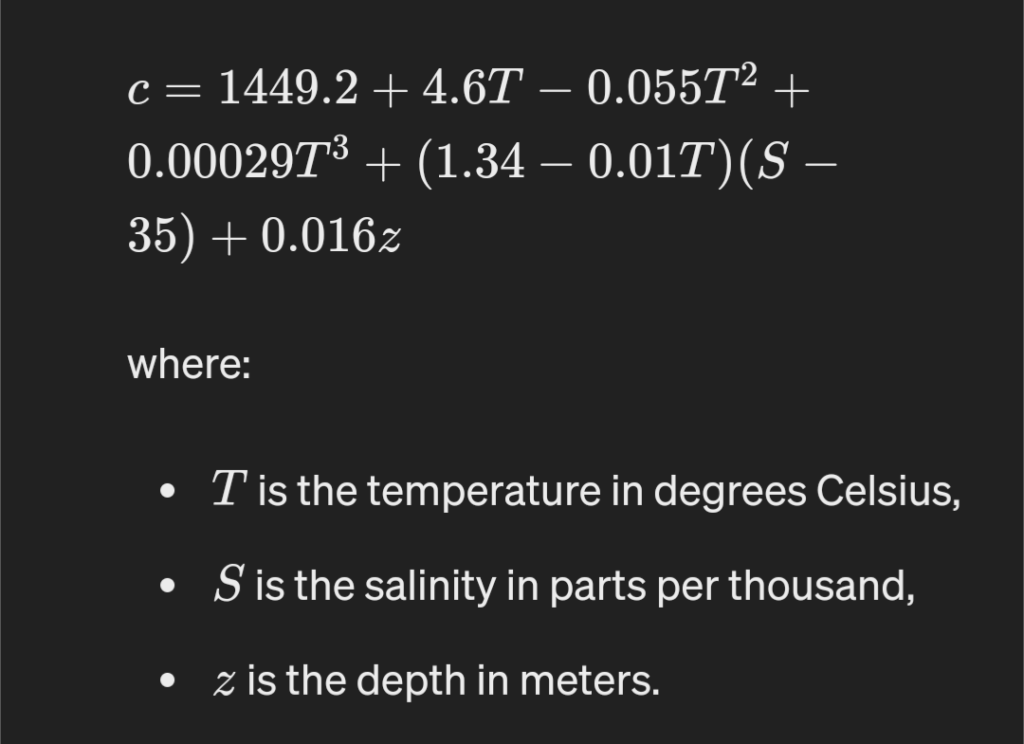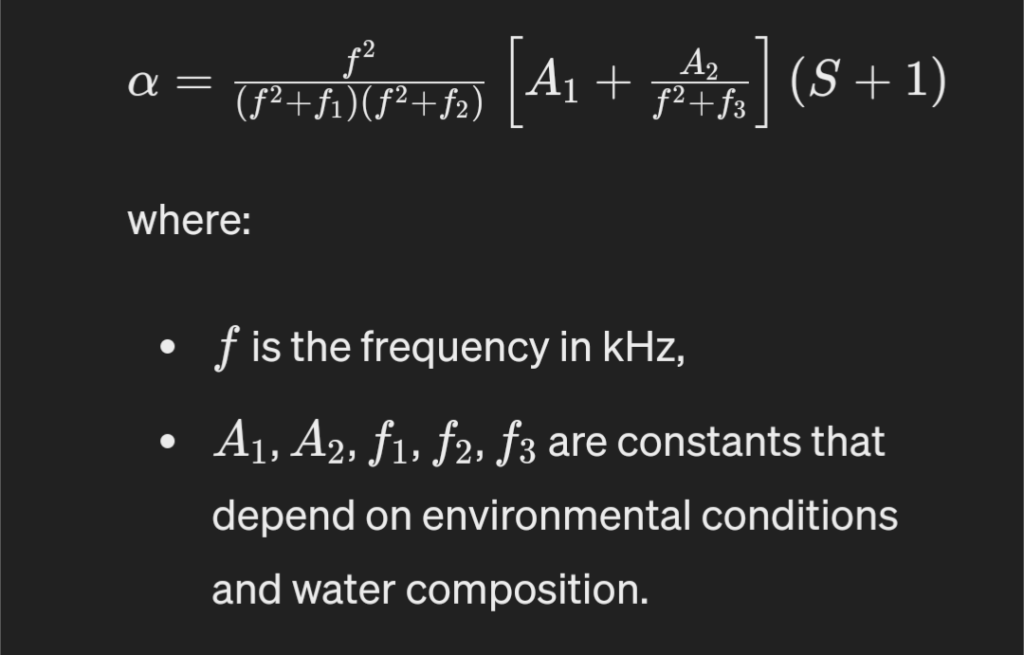Sound transmission in water is a fundamental area of study in underwater acoustics, which has important applications in fields such as marine biology, oceanography, and naval operations. The behavior of sound in water differs significantly from its behavior in air due to the unique physical properties of the medium. This article will explore the mechanics of sound waves in water, the mathematical equations governing sound propagation, and the implications of these properties.
Basic Principles of Sound in Water
Sound waves are longitudinal waves consisting of compressions and rarefactions of the medium through which they travel. In water, sound travels as a mechanical wave, transferring energy through the interaction of water molecules. Unlike air, water is an incompressible fluid, which influences how sound propagates through it.
Speed of Sound in Water
The speed of sound in water is influenced by temperature, salinity, and pressure (depth). The approximate formula to calculate the speed of sound ( c ) in water is given by:

This equation indicates that sound speed increases with higher temperatures, higher salinity, and greater depths.
Absorption of Sound
Sound absorption in water increases with frequency, which means that higher frequency sounds are more quickly attenuated than lower frequency sounds. The absorption coefficient ( \alpha ), measured in dB/m, can be estimated using the formula:

Sound Transmission Loss
Transmission loss in water, which includes both absorption and spreading losses, plays a crucial role in determining how far sound can effectively travel. Spreading loss occurs as the sound wave expands spherically from the source, diminishing in intensity proportionally to the square of the distance from the source. This spherical spreading loss can be calculated as:

where ( r ) is the distance from the source in meters.
Applications and Implications
Understanding sound propagation in water is crucial for designing sonar systems, marine mammal monitoring, and submarine communication systems. It aids in assessing the impact of human-generated noise on aquatic life and in developing strategies for underwater navigation and exploration.
Conclusion
Sound propagation in water is a complex process influenced by a range of environmental factors. Accurate knowledge of how sound behaves in aquatic environments is essential for advancing scientific research and technological applications in underwater acoustics.
References and Resources
- Urick, R. J. (1983). Principles of Underwater Sound. McGraw-Hill.
- Kinsler, L. E., et al. (2000). Fundamentals of Acoustics. Wiley.
- Medwin, H., & Clay, C. S. (1998). Fundamentals of Acoustical Oceanography. Academic Press.
These sources provide comprehensive discussions on the theory and practical aspects of sound propagation in water, suitable for both beginners and advanced researchers in the field.
